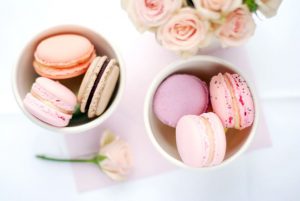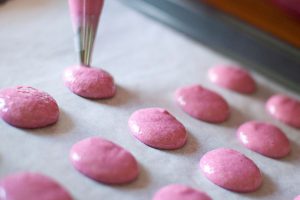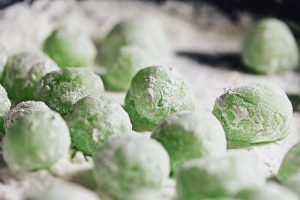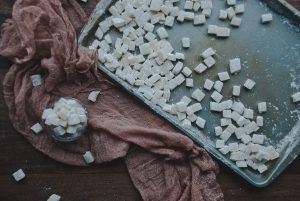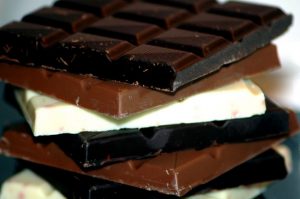
Image by: Dave
As a kid, all you care about are the sweeter things in life, like the candy and all the other sugary delights that you can get your hands on. You might have formed a strong love or addiction for chocolate…an overwhelming intense need for it in any form whether a candy bar or morsel chips in a cookie. Chocolate is everywhere, there are restaurants that cater their entire menu to chocolate lovers such as Jacques Torres and Max Brenner. Chocolate is an ingredient that can easily stand-alone but can also be accompanied with many other flavor concepts. I have such a strong interest in chocolate, its history, its creation process as well as how it has always been popular in both the culinary and confectionary world.
There is dark chocolate, milk chocolate, and white chocolate but there is a new chocolate version on the horizon, pink chocolate. Yes, you heard me correctly–pink chocolate. There are typically only three different varieties of chocolate which consists of Criollo, Trinitario, and Forastero. The higher quality chocolate is the Criollo and Trinitario beans which are the more expensive varieties as it isn’t cultivated as much and has a higher concentration of cocoa within the bean. These beans tend to be more robust, with a more potent flavor and bitterness. But the large-scale chocolate that is readily sold around the world for wide consumption is created from the Forastero beans. The cocoa bean itself is a fruit that is usually dried and fully fermented before it can go through the necessary processes to become chocolate.

Image by: Independent UK
With the exception of white chocolate, which is only created from cocoa butter and not the actual cocoa bean. This amazing creation was invented about eighty years ago, but today, the production of white chocolate is old news. Now, everyone has a newfound interest in pink chocolate. It has officially become the newest type of chocolate in the world. Ruby chocolate has a reddish-pink hue which comes from the Ruby cocoa bean and its flavor concept is not bitter or sweet but it has flavor notes of fruitiness and a smooth mouthfeel. Despite the popular debate, there are no berries, flavoring, or coloring added to the chocolate. The history of this chocolate is still unknown but has taken many years to have been developed. And now, gone are the days of a cheap Hershey’s candy bars… Here’s to welcoming the new-age innovation of gourmet chocolate.

